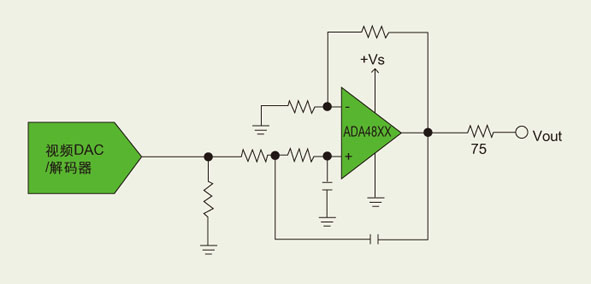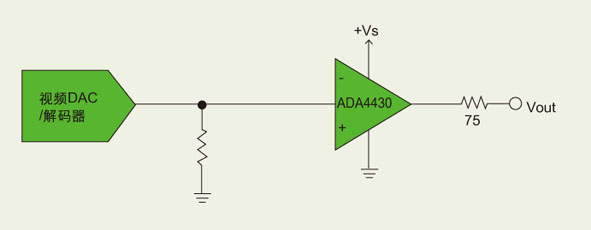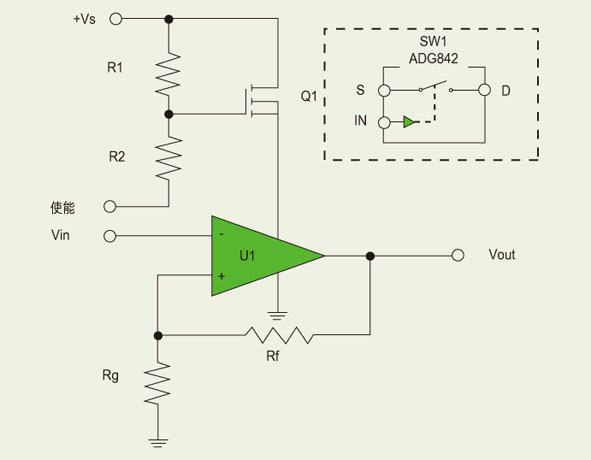Today's portable electronic products are very rich in functions. For example, watches can be used as TV remote controls, mobile phones can also be used as digital cameras and calculators, MP3 players can also be used as radios, storage devices and electronic photo albums, and PDAs have calendars, cameras, Mobile phone and game console functionality. As we integrate more and more functions into these devices, we also place an increasing burden on the power supply.
Today's electronic devices are typically powered by lithium-ion rechargeable batteries. Lithium-ion rechargeable batteries charge quickly but provide hours of operation and weeks of standby time. Analog Devices has developed a new family of power management and battery monitoring circuits designed to effectively manage power to extend battery operating time. Advances in power management and battery technology help extend battery life, but they only play part of the role. The truly effective way to extend battery life is to improve the efficiency of current semiconductor devices to support more functions with less power consumption. Today, semiconductor devices are required to operate at lower voltages, have higher bandwidths, switch faster, have less distortion, consume less power, and support the processing of more bytes.
Video capabilities are becoming a common feature in many of today's portable electronics, such as personal media players and cell phones. However, due to the limitations of the size and resolution of the display, it is inconvenient for multiple people to enjoy the images played by handheld devices together, so they require video output functions, but this new function means consuming more battery energy. The video output of these devices is usually an auxiliary function, so the video driver is usually turned off during normal operation. Therefore, both operating and standby current are critical parameters when evaluating a video amplifier or video driver.
To provide a more thorough analysis of the challenges faced by today's design engineers, two design cases are presented here. The first example discusses the design requirements for the video output section of an MP3 player. The main design considerations are operating current and board area. The second example is a low-power buffer application where standby current is the main concern.
 |
| Figure 1: Video output stage with discrete reconstruction filters. |
MP3 player with video output
This design adds composite video output stage circuitry to the MP3 player. The circuit must provide a low-pass filter with a gain of 2 times and a minimum bandwidth of 6MHz. The operating voltage is 3V, but the quiescent current is less than 3mA, the standby current is less than 15μA, and it requires a minimum board area. Cost is always a factor to consider, but it is not considered in the design case of this article.
Figure 1 shows a typical video output stage circuit in which the video amplifier and filter are driven by the output of a video digital-to-analog converter (DAC) and encoder, here using the ADV7190 or ADV7191. The video amplifier/filter uses an op amp and discrete components to create a two-pole Sallen-Key low-pass filter. The op amp provides a gain of 2 to drive a 75Ω video load. This reconstruction filter helps eliminate multiple images created during the video DAC sampling process.
Each amplifier offers distinct advantages to the design engineer. The ADA4850 offers the advantages of low operating current, very low standby current (15nA), and a small LFCSP package. Such low standby current is very useful in applications with low-capacity batteries, which will be discussed in the next case study. The operating current of ADA4851 is the same as that of ADA4850, but the supply voltage range is wider and the standby current is moderate. The ADA4853 has the lowest operating current of all amplifiers listed in the table, and the standby current is also very low. For low operating current applications, the ADA4853 is an ideal choice. The ADA4430 is a fully integrated filter and amplifier solution with low operating current and low standby current and requires no external components.
 |
| Amplifiers and filters that support video output from portable devices, these devices are suitable for low-power applications. |
Although the ADA48xx series amplifiers provide excellent operating performance, they require additional components to meet the design requirements of this case. An alternative solution to discrete filters is the ADA4430, a fully integrated filter with a gain unit. Replacing a discrete solution with the ADA4430 simplifies the design (Figure 2).
 |
| Figure 2: Video output stage with ADA4430 integrated amplifier and filter. |
For both solutions, engineers must make tradeoffs in circuit performance, current consumption, and size. The ADA4853 is also a good choice for this application and consumes less power than the ADA4430, but the ADA4430 requires fewer external components to meet all target specifications, making it a better choice for this application.
Ultra-low power buffer
This application is suitable for 25MHz clock buffer circuits used in portable entertainment devices, where the main design constraint is standby current. The power supply used in this application is a zinc-air battery with a capacity of only 87 mAh. The main technical indicators include: the standby current is less than 0.1μA (the total standby current allocated to this part of the circuit is only 10μA), the occupied area is small, and the operating voltage is 3V, power supply current less than 3mA, total circuit area 1cm 2 , bandwidth 1MHz.
 |
| Figure 3: External FET bypass transistors have traditionally been used to meet standby current requirements of less than 0.1µA. |
Traditionally, an external field-effect (FET) bypass transistor has been used to meet the standby current requirement of less than 0.1µA (Figure 3), but this increases component count and increases the board area beyond the board area allocated for this circuit. Using an analog switch like the ADG842 to replace the FET and its associated circuitry simplifies the design, but it still requires additional board area.
The ADA4850 meets all system requirements for this application and eliminates the need for external FET bypass transistors and their peripheral circuitry, simplifying layout and reducing circuit area to meet the 1 cm2 board area requirement.
To meet system design specifications, design engineers often face trade-offs when selecting components and circuit structures and must weigh all options. Tradeoffs between operating and standby current, performance and price, as well as size and simplicity of design are all common considerations in the design of portable electronics.
As portable electronics continue to shrink in size and manufacturers continue to add more features to these products, semiconductor companies need to continue to develop more efficient devices and increase the integration and functionality of each chip. Continued advancements in technology will enable future design engineers to design next-generation portable electronics with smaller circuit boards, faster speeds, lower power supply voltages (less current), and higher value for the end user.
Previous article:MP3 polyphonic chip ft1780 with SD/MMC memory card interface
Next article:Video output stage circuit to reduce power consumption of high-performance portable electronics
- Popular Resources
- Popular amplifiers
- High signal-to-noise ratio MEMS microphone drives artificial intelligence interaction
- Advantages of using a differential-to-single-ended RF amplifier in a transmit signal chain design
- ON Semiconductor CEO Appears at Munich Electronica Show and Launches Treo Platform
- ON Semiconductor Launches Industry-Leading Analog and Mixed-Signal Platform
- Analog Devices ADAQ7767-1 μModule DAQ Solution for Rapid Development of Precision Data Acquisition Systems Now Available at Mouser
- Domestic high-precision, high-speed ADC chips are on the rise
- Microcontrollers that combine Hi-Fi, intelligence and USB multi-channel features – ushering in a new era of digital audio
- Using capacitive PGA, Naxin Micro launches high-precision multi-channel 24/16-bit Δ-Σ ADC
- Fully Differential Amplifier Provides High Voltage, Low Noise Signals for Precision Data Acquisition Signal Chain
- Innolux's intelligent steer-by-wire solution makes cars smarter and safer
- 8051 MCU - Parity Check
- How to efficiently balance the sensitivity of tactile sensing interfaces
- What should I do if the servo motor shakes? What causes the servo motor to shake quickly?
- 【Brushless Motor】Analysis of three-phase BLDC motor and sharing of two popular development boards
- Midea Industrial Technology's subsidiaries Clou Electronics and Hekang New Energy jointly appeared at the Munich Battery Energy Storage Exhibition and Solar Energy Exhibition
- Guoxin Sichen | Application of ferroelectric memory PB85RS2MC in power battery management, with a capacity of 2M
- Analysis of common faults of frequency converter
- In a head-on competition with Qualcomm, what kind of cockpit products has Intel come up with?
- Dalian Rongke's all-vanadium liquid flow battery energy storage equipment industrialization project has entered the sprint stage before production
- Allegro MicroSystems Introduces Advanced Magnetic and Inductive Position Sensing Solutions at Electronica 2024
- Car key in the left hand, liveness detection radar in the right hand, UWB is imperative for cars!
- After a decade of rapid development, domestic CIS has entered the market
- Aegis Dagger Battery + Thor EM-i Super Hybrid, Geely New Energy has thrown out two "king bombs"
- A brief discussion on functional safety - fault, error, and failure
- In the smart car 2.0 cycle, these core industry chains are facing major opportunities!
- The United States and Japan are developing new batteries. CATL faces challenges? How should China's new energy battery industry respond?
- Murata launches high-precision 6-axis inertial sensor for automobiles
- Ford patents pre-charge alarm to help save costs and respond to emergencies
- New real-time microcontroller system from Texas Instruments enables smarter processing in automotive and industrial applications
- dsp28335 phase shift full bridge easy to understand program
- Optimizing DSP Power Budget by Adjusting Voltage Regulators
- [Erha Image Recognition Artificial Intelligence Vision Sensor] Review 3: Firmware Upgrade via HUSKYLENS Uploader
- [Portable programmable meter] Ready to start soldering the board
- TMS320VC5509A development board hardware LED indicators and buttons
- 3 hours of practice + analysis (live): TI engineers will guide you to get started with MSP430. Make an appointment now for free~
- Welding problem or SI problem? You decide!
- Issues that should be paid attention to when using CMOS circuits
- EEWORLD University ---- Wide input DC-DC converters that meet low quiescent current requirements in industrial applications
- Is Python worth learning? Is it easy to learn?

 A review of deep learning applications in traffic safety analysis
A review of deep learning applications in traffic safety analysis
















 京公网安备 11010802033920号
京公网安备 11010802033920号